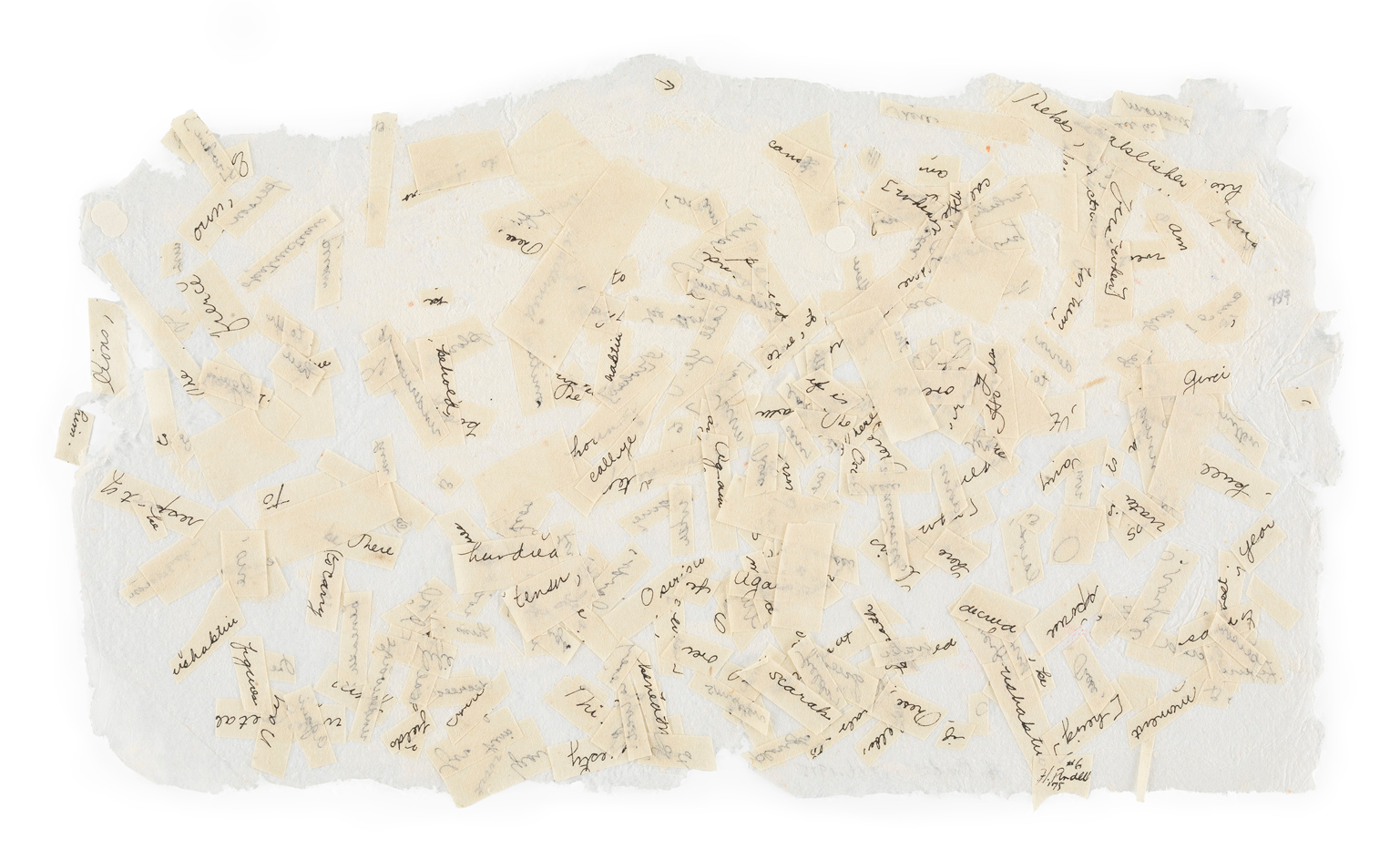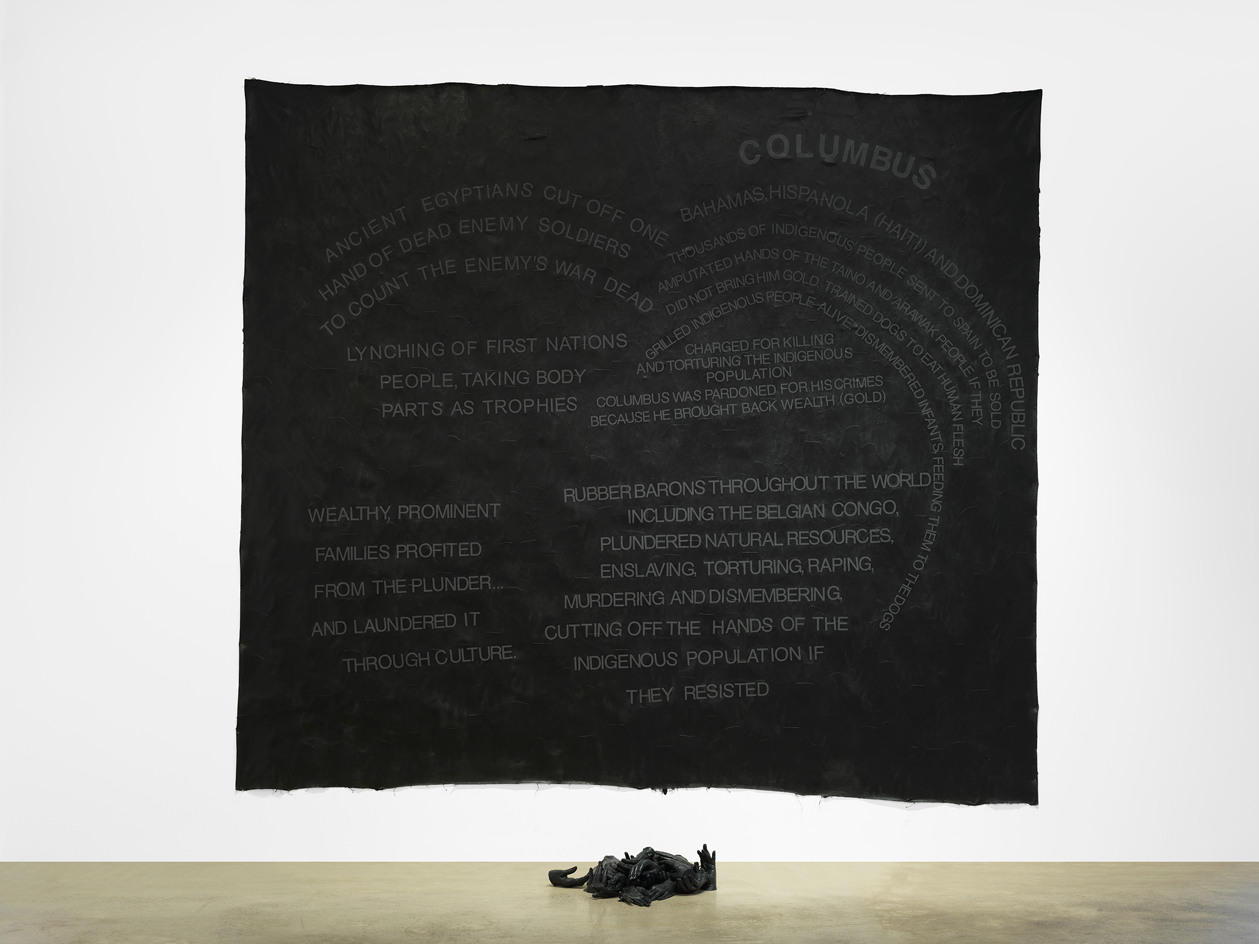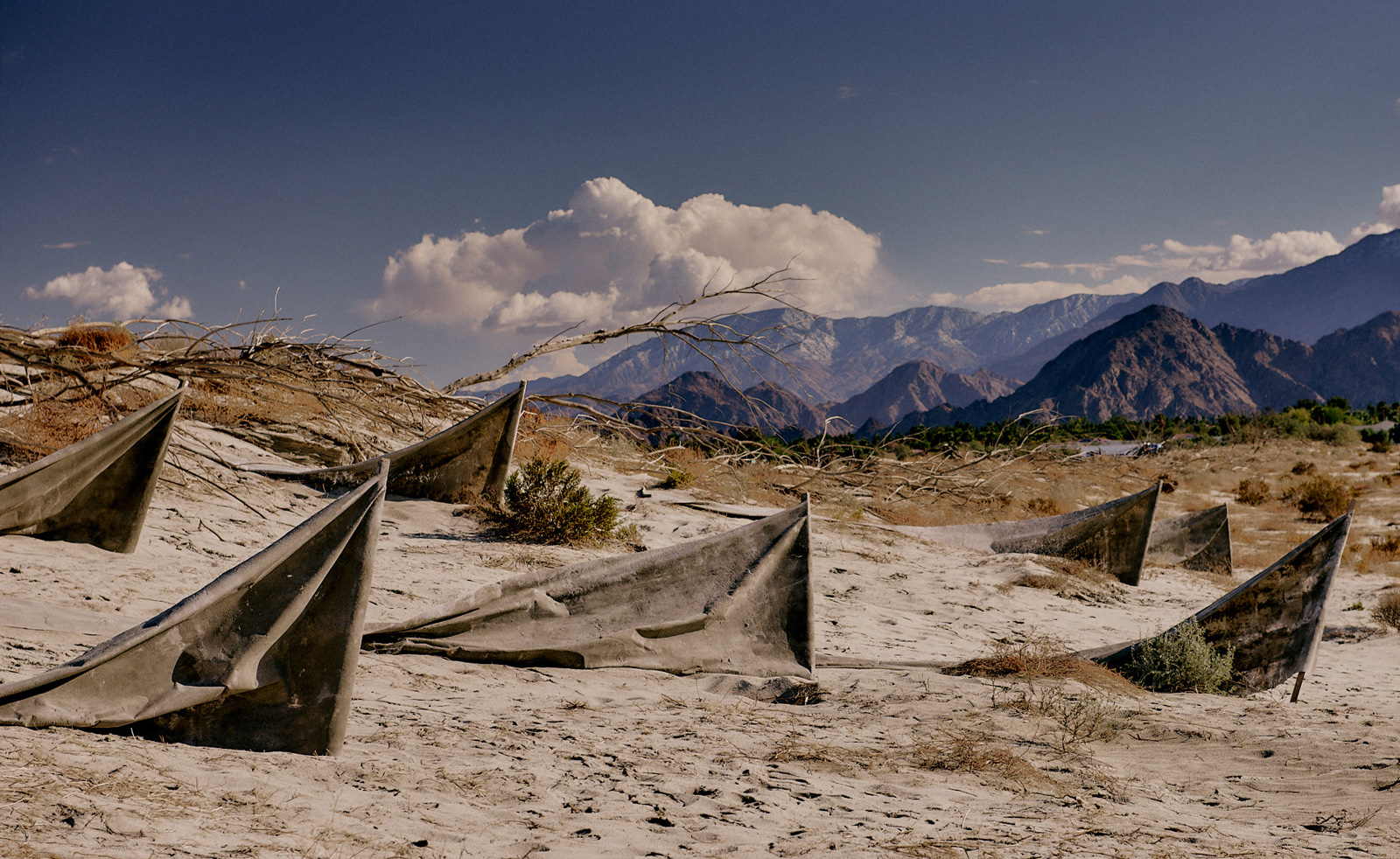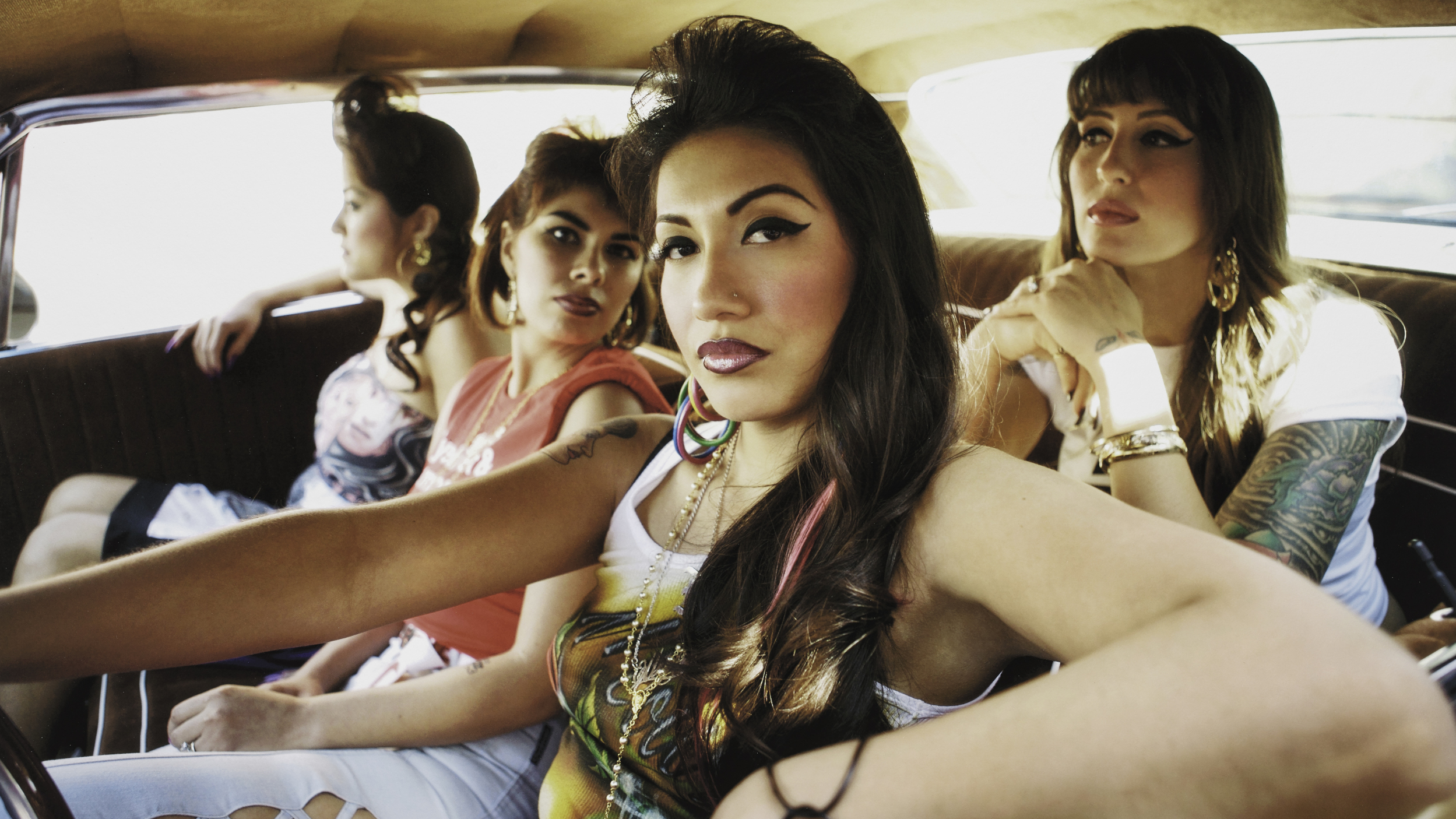Howardena Pindell on art as protest, politics, and the power of DNA ancestry
American artist Howardena Pindell reflects on an art career filled with socio-political bite and aesthetic mastery, ahead of ‘A New Language’, her newly opened show at Kettle’s Yard, Cambridge

Howardena Pindell’s practice holds within it protest, politics and abstraction. Addressing race, slavery, women’s rights, feminism and segregation in the United States, her work packs a punch. Her take is calm yet unstinting and tackles the raw end of these issues with a piercing intellectual bite and aesthetic mastery.
Born in 1943, Pindell was involved in a car accident in 1979, the same year she left her post as a curator at MoMA New York. It was a few months later that she recorded the seminal video work, Free, White and 21 (1980), which saw a shift towards the political in her work, although she has always maintained a painting practice in tandem with this.

Howardena Pindell, Rope/Fire/Water, 2020.
‘A New Language’ at Kettle’s Yard in Cambridge, on tour from Edinburgh’s Fruitmarket Gallery, is a snapshot of a long practice encompassing film, painting and works on paper.
Although her work can appear disparate at first glance – using new media, lace-making, painting and drawing – elements of resistance persist, often through circle motifs, taken from the circle that marked segregated objects in the American South when she was a child. These elements are present throughout her abstract works and notably in the unflinching film Rope/Fire/Water (2020) about police violence and lynching. Even in her most decorative and delicate works, these messages are communicated loud and clear, whether that be through text or materials and colour.

Howardena Pindell, Free, White and 21, 1980.
Wallpaper*: The title of the show is ‘A New Language’. Why did you feel you needed a new language and how did you come to it?
Howardena Pindell: First of all, the new language would be inclusive, both verbal and visual. One of the things that helps us to have a new language is the expansion of the world wide web, although many people in poor countries don't have access.
One thing I think is important is to explore how different cultures name things and read colours. Various cultures have their own visual and verbal languages, which are also influenced by other cultures, which can create a hybrid.
I think the biggest thing of all that's happened in terms of a new language is that people can now access their DNA. I have Zulu DNA, South African, South Indian, Nigerian, Ethiopian, Portuguese, Finnish, Scandinavian, Basque Spanish, Native American, Inuit, German, Irish, Greek, Sicilian, Cypriot and Bahamian. I'm sure a lot of this DNA came about because of enslavement, because there was so much rape of enslaved women during the African slave trade.
Wallpaper* Newsletter
Receive our daily digest of inspiration, escapism and design stories from around the world direct to your inbox.
W*: So, you have been mapping your personal history through your DNA?
HP: I just think it's fascinating. I mean, that changes the language that all of us have when we think of all our different ancestors, and it's complex for everyone. It's not just enslavement, there’s been so much movement of different cultures, some of them nomadic.

Howardena Pindell, Text, 1975 Ink on paper collage.
W*: You are an artist of many mediums and a political artist. Where does your visual language meet your politics? How do they intersect?
HP: I was born during segregation, and I was in college during the Civil Rights Movement. I picketed in Woolworth, Philadelphia, because of their segregated lunch counters in the South.
It was after the head injury as a passenger in a car accident, where I realised I could have died, that I started doing my issue-related work. I felt that if I didn't express myself, I may be gone, so I would rather say what I wanted to say on canvas.
There are two recent paintings which are about 9ft by 9ft, one is called Four Little Girls, and it was about the four children who were preparing for Sunday school in a church in Birmingham, Alabama. Members of the Klan bombed the church and killed all the little girls, it was a Black church during segregation.
In my issue-related work, I use text and installation and of course, the large format, the issue-related paintings also require research, and I think the influence would have been my mother who was a historian. Now, there are more publications available to use for research on many issue-related topics.

Howardena Pindell, Separate but Equal Genocide: AIDS, 1991–1992. Private collection, Aspen, CO
W*: Your practice takes the literal, abstract forms and issue-related art and brings them together in one visual language. How did you come to make art in this way?
HP: Well, I loved to play when I was a child and I think just because my father was a science person, I was given a small microscope instead of a doll. I can remember my pink bunny, so I remember my little pink bunny rabbit and a microscope.
When I was a child, I used the microscope to look at the drinking water in Philadelphia and it was teeming with life; later I looked at New York water and there was nothing. A couple of months ago, I bought a professional microscope to look at nature close-up, water, leaves, and anything to get ideas for forms.
I’m happy making art and I like experimenting with new materials; I'm happiest making art and trying new things. In my past shows, and in my writing, sometimes.
Sometimes the past shows up again in my work. I've started to do spray paintings again.
My art dealer, who's amazing, has got me a large studio and now I’m able to recreate or create new spray paintings. I love making handmade paper pieces and I've been working with Dieu Donné, an artists’ paper-making organisation

Howardena Pindell, Columbus, 2020 Mixed media on canvas.
INFORMATION
Howardena Pindell, ’A New Language’, until 30 October 2022, Kettle’s Yard, Cambridge. kettlesyard.co.uk
Amah-Rose Abrams is a British writer, editor and broadcaster covering arts and culture based in London. In her decade plus career she has covered and broken arts stories all over the world and has interviewed artists including Marina Abramovic, Nan Goldin, Ai Weiwei, Lubaina Himid and Herzog & de Meuron. She has also worked in content strategy and production.
-
 Extreme Cashmere reimagines retail with its new Amsterdam store: ‘You want to take your shoes off and stay’
Extreme Cashmere reimagines retail with its new Amsterdam store: ‘You want to take your shoes off and stay’Wallpaper* takes a tour of Extreme Cashmere’s new Amsterdam store, a space which reflects the label’s famed hospitality and unconventional approach to knitwear
By Jack Moss
-
 Titanium watches are strong, light and enduring: here are some of the best
Titanium watches are strong, light and enduring: here are some of the bestBrands including Bremont, Christopher Ward and Grand Seiko are exploring the possibilities of titanium watches
By Chris Hall
-
 Warp Records announces its first event in over a decade at the Barbican
Warp Records announces its first event in over a decade at the Barbican‘A Warp Happening,' landing 14 June, is guaranteed to be an epic day out
By Tianna Williams
-
 Leonard Baby's paintings reflect on his fundamentalist upbringing, a decade after he left the church
Leonard Baby's paintings reflect on his fundamentalist upbringing, a decade after he left the churchThe American artist considers depression and the suppressed queerness of his childhood in a series of intensely personal paintings, on show at Half Gallery, New York
By Orla Brennan
-
 Desert X 2025 review: a new American dream grows in the Coachella Valley
Desert X 2025 review: a new American dream grows in the Coachella ValleyWill Jennings reports from the epic California art festival. Here are the highlights
By Will Jennings
-
 In ‘The Last Showgirl’, nostalgia is a drug like any other
In ‘The Last Showgirl’, nostalgia is a drug like any otherGia Coppola takes us to Las Vegas after the party has ended in new film starring Pamela Anderson, The Last Showgirl
By Billie Walker
-
 ‘American Photography’: centuries-spanning show reveals timely truths
‘American Photography’: centuries-spanning show reveals timely truthsAt the Rijksmuseum in Amsterdam, Europe’s first major survey of American photography reveals the contradictions and complexities that have long defined this world superpower
By Daisy Woodward
-
 Sundance Film Festival 2025: The films we can't wait to watch
Sundance Film Festival 2025: The films we can't wait to watchSundance Film Festival, which runs 23 January - 2 February, has long been considered a hub of cinematic innovation. These are the ones to watch from this year’s premieres
By Stefania Sarrubba
-
 What is RedNote? Inside the social media app drawing American users ahead of the US TikTok ban
What is RedNote? Inside the social media app drawing American users ahead of the US TikTok banDownloads of the Chinese-owned platform have spiked as US users look for an alternative to TikTok, which faces a ban on national security grounds. What is Rednote, and what are the implications of its ascent?
By Anna Solomon
-
 Architecture and the new world: The Brutalist reframes the American dream
Architecture and the new world: The Brutalist reframes the American dreamBrady Corbet’s third feature film, The Brutalist, demonstrates how violence is a building block for ideology
By Billie Walker
-
 ‘Gas Tank City’, a new monograph by Andrew Holmes, is a photorealist eye on the American West
‘Gas Tank City’, a new monograph by Andrew Holmes, is a photorealist eye on the American West‘Gas Tank City’ chronicles the artist’s journey across truck-stop America, creating meticulous drawings of fleeting moments
By Jonathan Bell